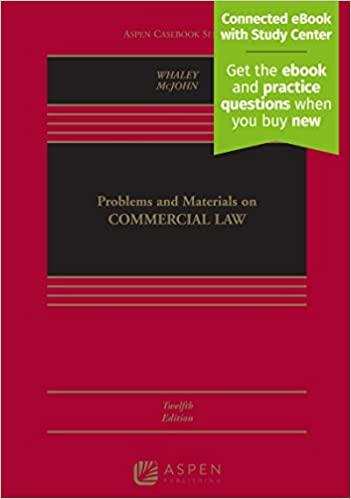Question
A witness on the stand that testifies about whatsomebody elsesaid. The witness on the stand is considered the declarant. True False 2)We do not allow
- A witness on the stand that testifies about whatsomebody elsesaid. The witness on the stand is considered thedeclarant.
True
False
2)We do not allow Hearsay statments at trial because it violates theCommerce Clausein the Bill of Rights.
True
False
3)The Confrontation Clause comes from what Bill of Rights amendment.
The Second Amendment
The Fifth Amendment
The Sixth Amendment
The Fourth Amendment
None of the above
All of the above
4)Body motions- like knoding of the head, in response to a question can beconsidered hearsay.
True
False
5)ADeclarant-centered statement is one in which you are trying to prove the truth of matter asserted.
True
False
6)Hearsay statements areneverpermitted as evidence at a trial.
True
False
7)AnExcited Utteranceis a statement that must be madespontaneouslyat the time of the event or stress.
True
False
8)Anambulance reportin which a victim describes their injury and the amount of pain they are having will be allowed as a hearsay exception.
True
False
9)Former testimony is allowed as anexceptionto hearsay rule because the Confrontation Clause was not violated since the prior proceeding allowed direct, cross and redirect examination.
True
False
10)In order for aDying Declarationto be admissible the person who made the statement had to actually die.
True
False
Step by Step Solution
There are 3 Steps involved in it
Step: 1

Get Instant Access to Expert-Tailored Solutions
See step-by-step solutions with expert insights and AI powered tools for academic success
Step: 2

Step: 3

Ace Your Homework with AI
Get the answers you need in no time with our AI-driven, step-by-step assistance
Get Started


